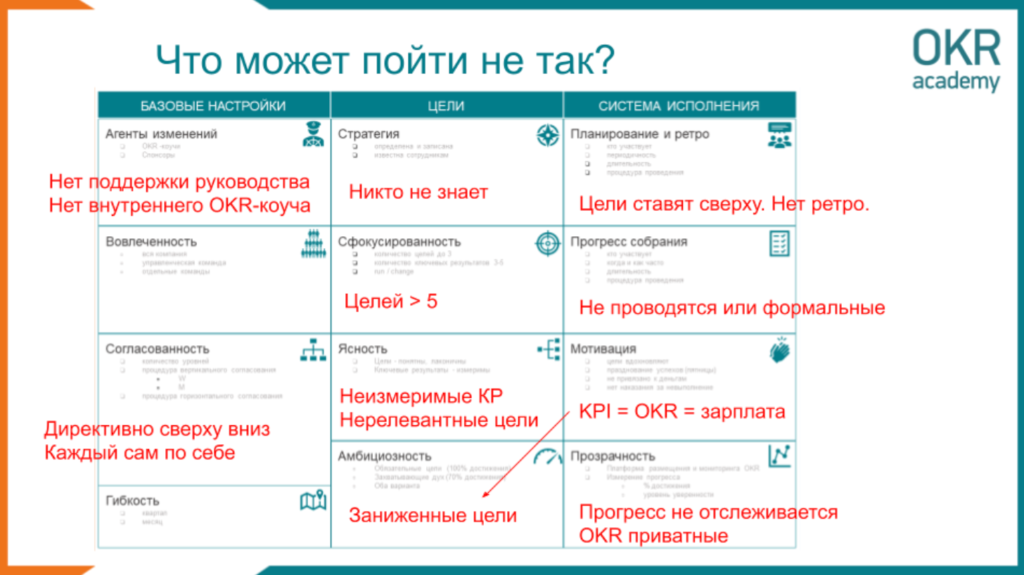
As we’ve already discussed, formulating OKRs (Objectives and Key Results) is a powerful tool for achieving company goals, but there are common mistakes that can reduce its effectiveness. I will describe the key pitfalls that should be avoided when developing OKRs.
For some readers who have long implemented and used OKRs, this may be obvious, but for most (myself included), a refresher on the basics is helpful from time to time.
The first and most common mistake is setting too ambitious or, conversely, too simple goals (Objectives). OKRs should be realistic while still incentivizing the team to put in significant effort. If a goal seems unattainable, it can demotivate employees. At the same time, if the goal is too simple, it will not generate the desired level of engagement and will not bring meaningful results. Remember that OKRs are not the same as KPIs, which must be 100% achieved.
The second pitfall is the insufficient specification of key results (Key Results – KR). Key results must be clear and measurable so that it can be clearly determined whether the goal has been achieved or not. For example, instead of the vague “improve customer service,” it is better to use “reduce support response time by 20%.”
The third mistake is lack of flexibility. The business world is dynamic, and OKRs need to be adaptive. If new circumstances or priorities arise, it is important to review and adjust goals. Rigid adherence to the original plan can lead to wasted resources and missed opportunities. Therefore, it is important to hold regular synchronization meetings, at which not only progress is discussed, but also the relevance of previously set goals.
Another problem is the lack of connection between OKRs and the company’s strategic goals. OKRs should reflect the company’s long-term priorities and mission to ensure they are meaningful and synergistic. When OKRs are isolated from the overall strategy, they can lead to disorientation and fragmented efforts.
In this part, OKRs should be brought down from above – the company’s top leadership team (Leadership Team) needs to regularly (at least once a year, and preferably once every six months) hold strategic sessions at which strategic goals are formed and updated. Starting from strategic goals, performers must plan and promote their goals and key results from the bottom up.
It is also important to remember the importance of regular review and feedback. It’s about synchronization again. Monthly and quarterly OKR reviews at all levels help evaluate progress and make necessary adjustments. Without constant monitoring, OKRs can become just a formality that does not bring real value.
Finally, it is critical to avoid creating too many OKRs. Too many goals can scatter the team’s attention and resources. It’s better to focus on a few key priorities that really matter. Optimally no more than 3-5 OKRs.
The success of OKRs depends on the ability to clearly articulate goals, remain flexible, and tie them to the overall company strategy. By avoiding these pitfalls, you can greatly improve your chances of achieving meaningful and lasting results.